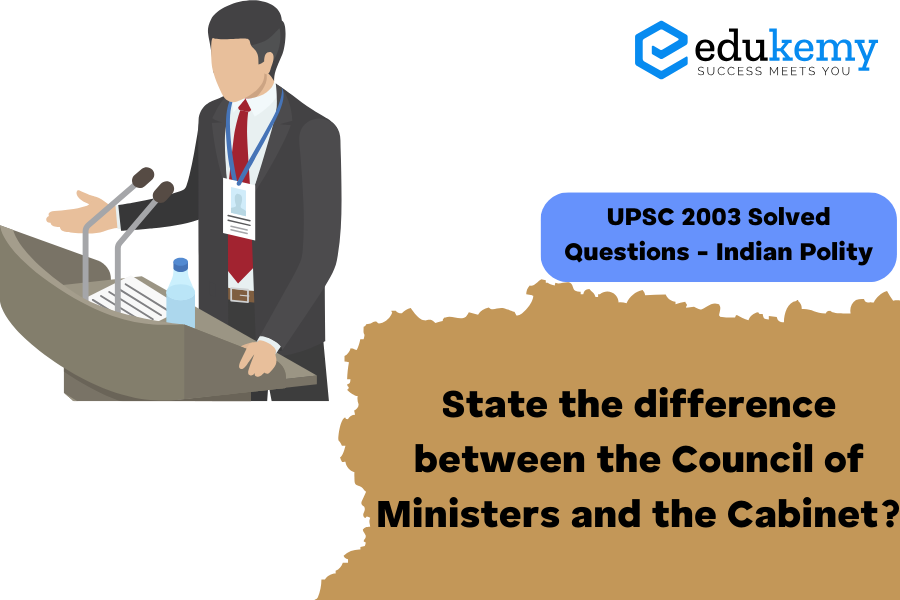
In the Indian Constitution, the terms “Council of Ministers” and “Cabinet” refer to distinct entities within the executive branch, each playing a specific role. Here are the key differences between the Council of Ministers and the Cabinet:
Contents
Composition:
- Council of Ministers: It includes all the ministers, both senior and junior, appointed by the President on the advice of the Prime Minister. The Council of Ministers encompasses ministers of various ranks and portfolios.
- Cabinet: It is a subset of the Council of Ministers and consists of senior ministers chosen by the Prime Minister. Cabinet ministers usually hold significant portfolios and are part of key decision-making processes.
Decision-Making:
- Council of Ministers: While the Council of Ministers collectively participates in decision-making, the real authority often rests with the Cabinet and the Prime Minister.
- Cabinet: It is the core decision-making body within the Council of Ministers. Major policy decisions and crucial matters are typically deliberated and decided upon by the Cabinet.
Hierarchy:
- Council of Ministers: It includes ministers of various ranks, such as Cabinet Ministers, Ministers of State (Independent Charge), and Ministers of State.
- Cabinet: It comprises senior ministers, usually holding key portfolios like Finance, Home Affairs, Defense, etc. Cabinet ministers are often considered the top tier in the ministerial hierarchy.
Advisory Role:
- Council of Ministers: It serves in an advisory capacity to the Prime Minister and collectively aids in the administration and governance of the country.
- Cabinet: Being the core decision-making body, the Cabinet plays a more direct and influential role in advising the Prime Minister on major policy matters.
Collective Responsibility:
- Council of Ministers: Members share collective responsibility for the overall performance of the government and its policies.
- Cabinet: The principle of collective responsibility is particularly emphasized within the Cabinet, where ministers collectively support and defend the government’s decisions.
In summary, while the Council of Ministers is a broader group comprising ministers of different ranks, the Cabinet is a more focused and influential subset within the Council. The Cabinet plays a crucial role in decision-making and policy formulation, with its members often holding key portfolios in the government.

In case you still have your doubts, contact us on 9811333901.
For UPSC Prelims Resources, Click here
For Daily Updates and Study Material:
Join our Telegram Channel – Edukemy for IAS
- 1. Learn through Videos – here
- 2. Be Exam Ready by Practicing Daily MCQs – here
- 3. Daily Newsletter – Get all your Current Affairs Covered – here
- 4. Mains Answer Writing Practice – here

